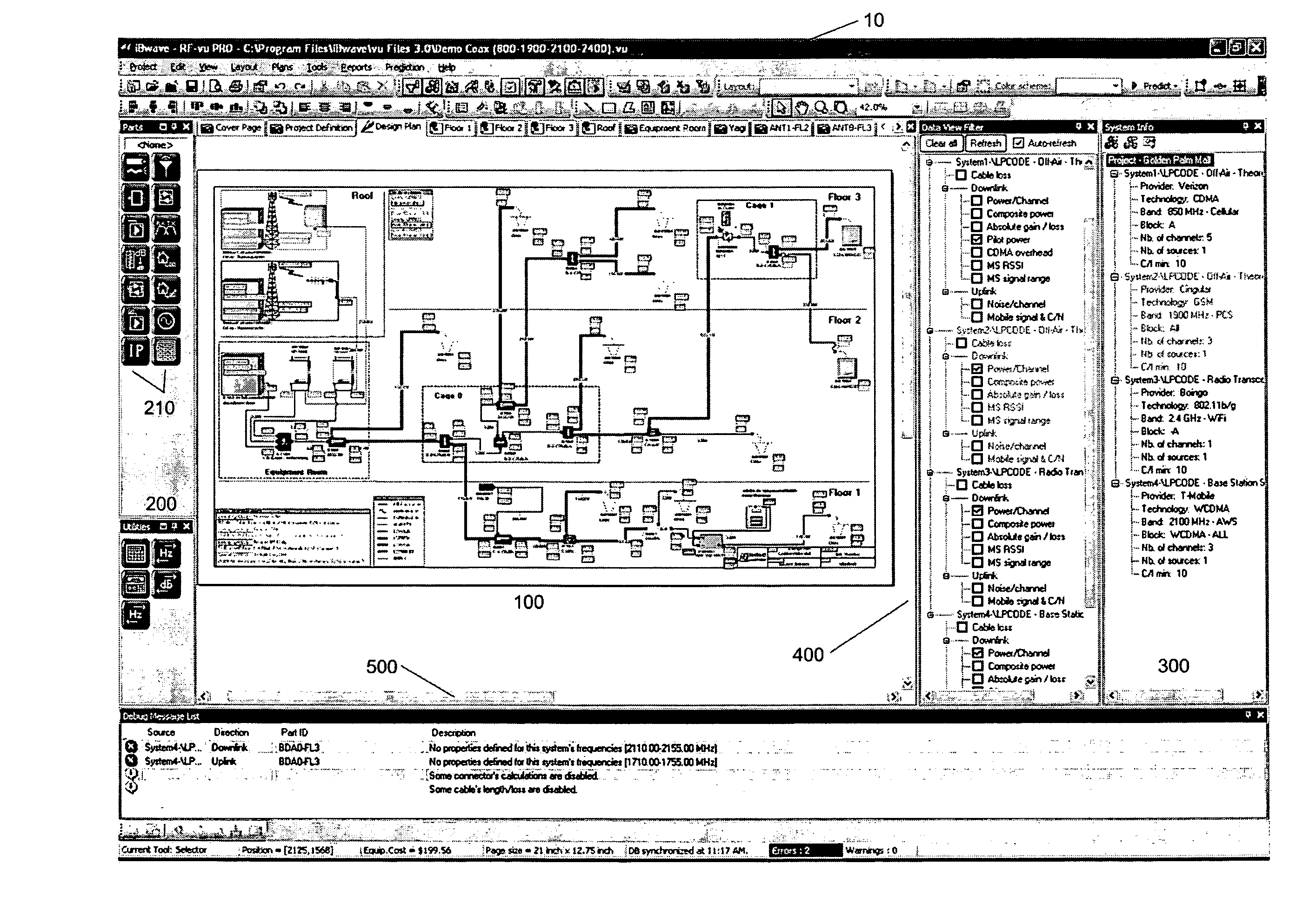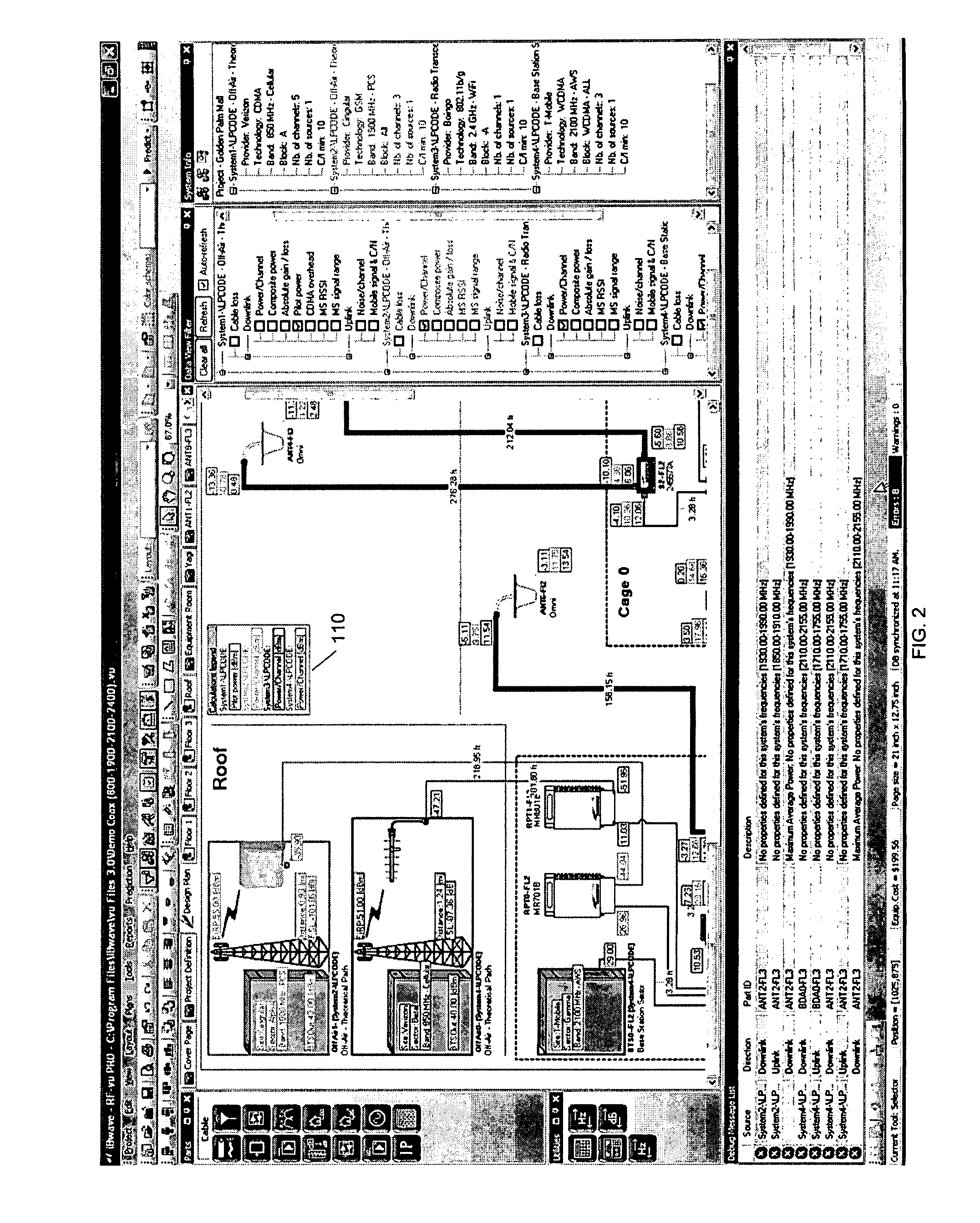Tool for Multi-Technology Distributed Antenna Systems
a distributed antenna and multi-technology technology, applied in the direction of network planning, electrical equipment, radio/inductive link selection arrangements, etc., can solve the problems of serious deterioration of the network, limited radio frequency penetration, and complex indoor rf design, so as to improve the design process, and improve the effect of the disposition
- Summary
- Abstract
- Description
- Claims
- Application Information
AI Technical Summary
Benefits of technology
Problems solved by technology
Method used
Image
Examples
Embodiment Construction
[0044] A novel design tool for multi-technology distributed antenna systems will be described hereinafter. Although the invention is described in terms of specific illustrative embodiments, it is to be understood that the embodiments described herein are by way of example only and that the scope of the invention is not intended to be limited thereby.
[0045] In a nutshell, the design tool of the present invention allows the wireless designer to devise a DAS network which can support multiple signal sources, each of them possibly using a different band of frequencies and / or a different communication technology. Moreover, for each compatible signal source present in the design, the design tool substantially simultaneously computes uplink and downlink values at each antenna and each network component interconnection. Also, the design tool updates any uplink and / or downlink calculations which may have been affected by a modification in the design.
[0046] Being a computer-aided design (CA...
PUM
 Login to View More
Login to View More Abstract
Description
Claims
Application Information
 Login to View More
Login to View More - R&D
- Intellectual Property
- Life Sciences
- Materials
- Tech Scout
- Unparalleled Data Quality
- Higher Quality Content
- 60% Fewer Hallucinations
Browse by: Latest US Patents, China's latest patents, Technical Efficacy Thesaurus, Application Domain, Technology Topic, Popular Technical Reports.
© 2025 PatSnap. All rights reserved.Legal|Privacy policy|Modern Slavery Act Transparency Statement|Sitemap|About US| Contact US: help@patsnap.com



